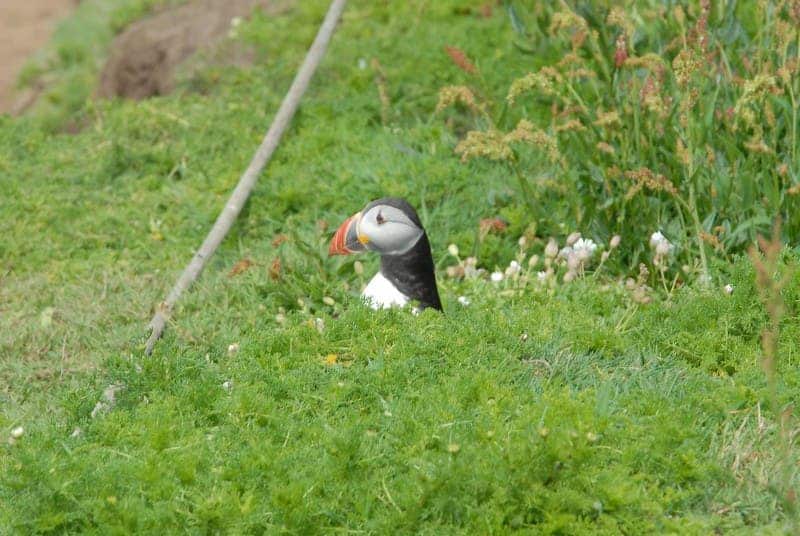With no visitors allowed, the wardens of the small island of Skokholm have been wandering the island freely. In their walks, they uncovered a prehistoric stone age tool that dates back 9,000 years — in a rabbit hole, of all places. The tool would have been used for preparing seal hides or cracking shellfish.
But the discoveries didn’t even end there: the very next day, a 3,750-year-old burial urn was found, kicked out of the same rabbit hole.
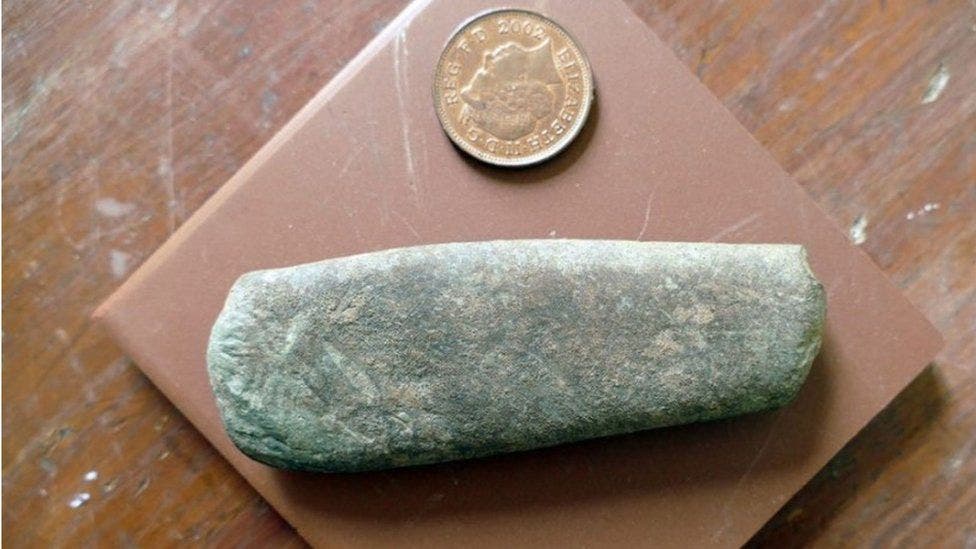
Busy bunnies
The picturesque island of Skokholm, off the coast of Wales, UK, is best known for its bird colonies. Battered by storms, the high cliffs and the isolated nature of the island make it a haven for seabirds. There are no predators on Skokholm, and during late spring, the island hosts thousands of seabirds (including Atlantic puffins) that come to lay their eggs. The island has been functioning as a bird observatory for almost a hundred years.
At just one mile long and about half a mile at its widest point, Skokholm bears a Norse name meaning “wooded island”. It doesn’t have any trees now, but presumably, when the Vikings settled there in the 10th or 11th century, it did.
But the island’s history goes down way further, as it was likely inhabited for several thousand years.
The nearby Skomer Island, similar but somewhat larger, is known for its well-preserved prehistoric archaeology sites. But with visitors temporarily banned from the islands due to the pandemic, wardens have found evidence that Skokholm also has a rich history.
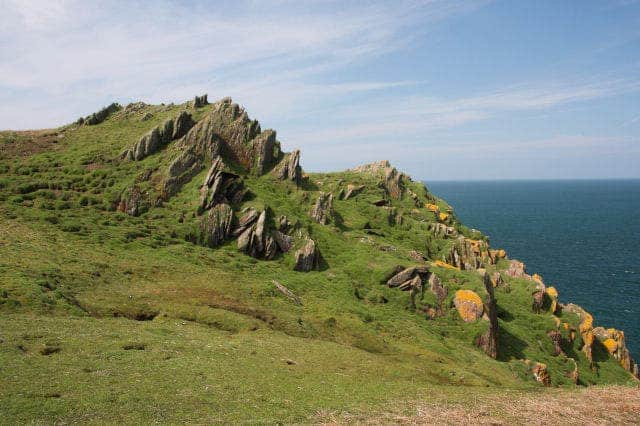
Richard Brown and Giselle Eagle, seabird experts who serve as wardens of the otherwise uninhabited island, took advantage of the tourist-less days granted by the pandemic and explored the island in greater detail. At one point, they came across an unusual tool laid beside a rabbit burrow.
The rabbit burrow itself was pretty ancient, likely being inhabited by different groups for thousands of years. At some point, one of the rabbit residents got annoyed by the tool or simply kicked it out unwittingly, where Brown and Eagle found it.
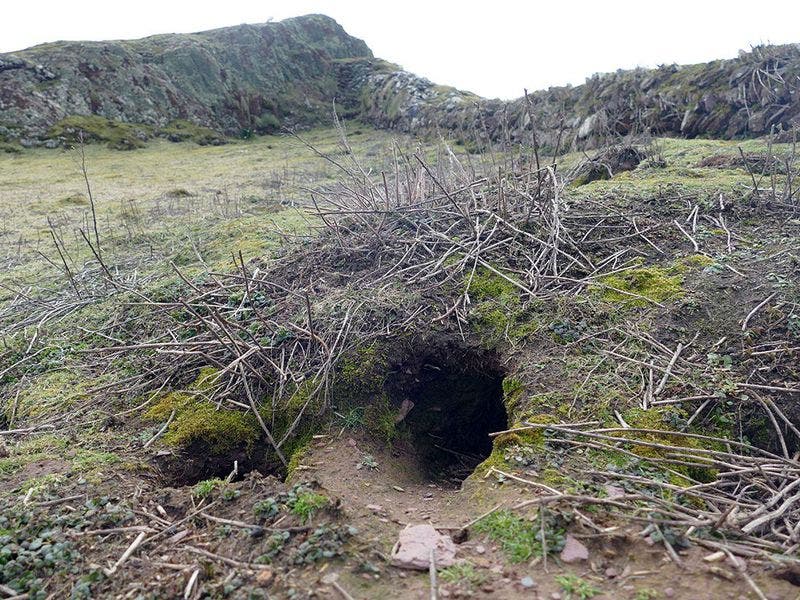
The two took retrieved the tool, took photos of it, and sent them to archaeological experts. Andrew David, an expert in prehistoric tools, quickly identified it as a 6,000- to 9,000-year-old Mesolithic tool.
‘The photos were clearly of a late Mesolithic (Middle Stone Age) ‘beveled pebble’, a tool thought to have been used in tasks like the preparation of seal hides for making skin-clad watercraft, or for processing foods such as shellfish, among hunter-gatherer communities some 6000-9000 years ago.’
‘Although these types of tools are well known on coastal sites on mainland Pembrokeshire and Cornwall, as well as into Scotland and northern France, this is the first example from Skokholm and the first firm evidence for Late Mesolithic occupation on the island’.
Rabbits, puffins, and humans
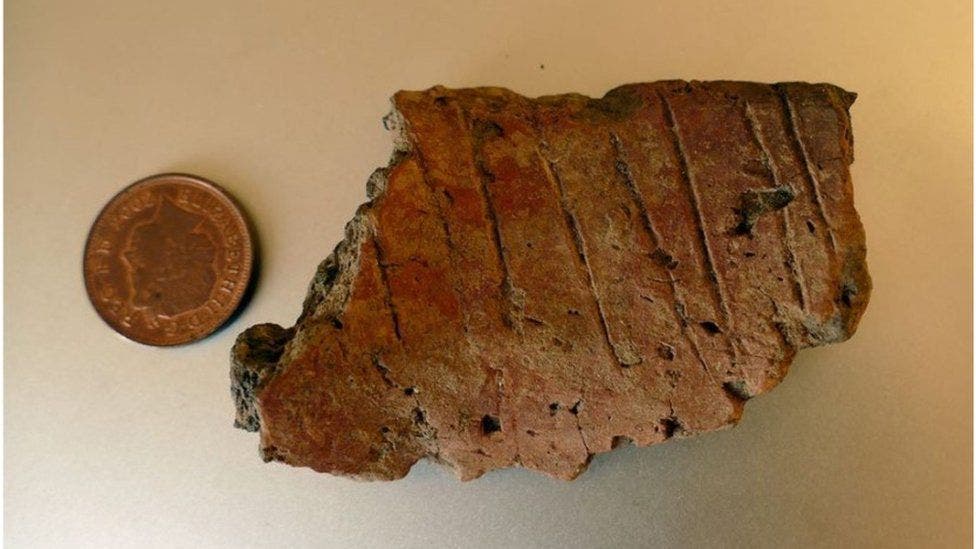
But the discoveries didn’t stop there. The very next day, the two wardens picked up a second pebble tool from the same burrow, and noticed large pieces of pottery being kicked out. In their burrow redecoration, the bunnies had revealed signs of ancient human occupation.
This time it was Jody Deacon, Curator of Prehistoric Archaeology at Amgueddfa Cymru – National Museum Wales who recognized their significance. A fragment likely belonged to an Early Bronze Age Vase Urn, usually associated with cremation burials. Dating to around 3750 years ago, this type of burial urn was quite common at the time in west Wales, Deacon explains.
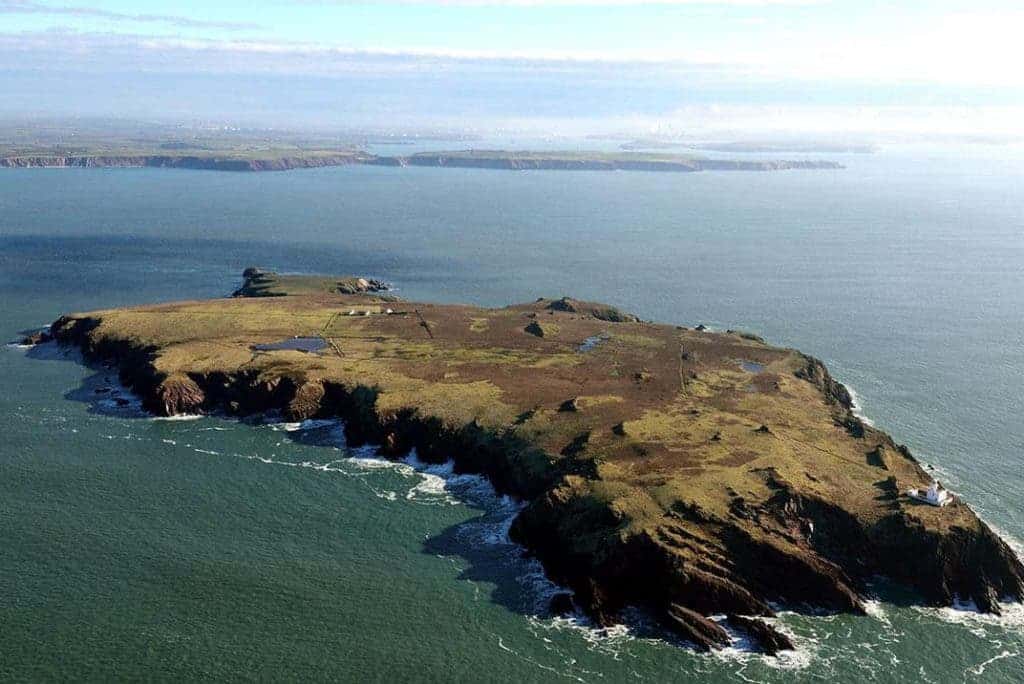
Archaeologists Toby Driver, who carried out archaeological surveys on the nearby islands of Skomer, Grassholm, and Ramsey, comments:
‘We know from past aerial surveys and airborne laser scanning by the Royal Commission that Skokholm has the remains of some prehistoric fields and settlements, though none has ever been excavated.’
‘Now Skokholm is producing some amazing prehistoric finds. It seems we may have an Early Bronze burial mound built over a Middle Stone Age hunter gatherer site, disturbed by rabbits. It’s a sheltered spot, where the island’s cottage now stands, and has clearly been settled for millennia.’
‘Thanks to the sharp eyes of the wardens we have the first confirmed Mesolithic tools and first Bronze Age pottery from Skokholm. To date, we have nothing similar from the larger islands of Skomer or Ramsey.’
Like many islands, Skokholm served as a rabbit farm for over 200 years, starting in 1324. It was an ideal place to grow rabbits, as there were no predators to worry about, and medieval Norman farmers took full advantage of this. At some point after the island lost all its trees, it was also used as a grazing spot for nearby shepherds.
Nowadays, tourists zoom along the islands in organized trips, to see the countless puffins and other sea birds that flock to the islands. The birds seem to be rejoicing the pandemic year, with some estimates noting that the puffin population has grown to the highest level since the 1940s.
As pandemic restrictions will be lifted, both archaeologists and tourists will be looking at Skokholm more closely — the former to look for signs of ancient occupation, the latter to enjoy the views and bird colonies. The more adventurous can even spend several nights on Skokholm, essentially living off the grid for a few days.
